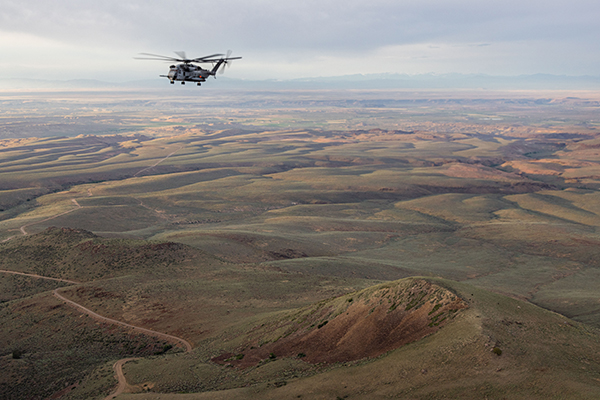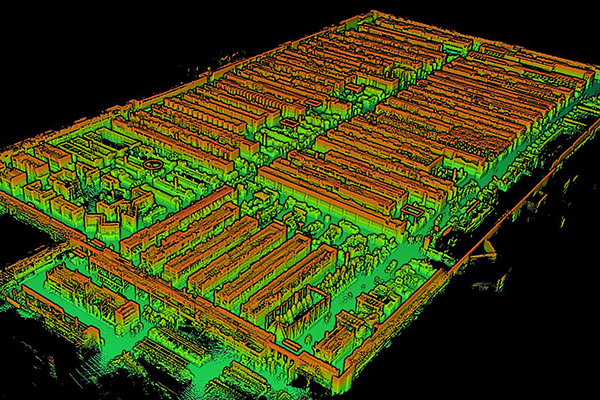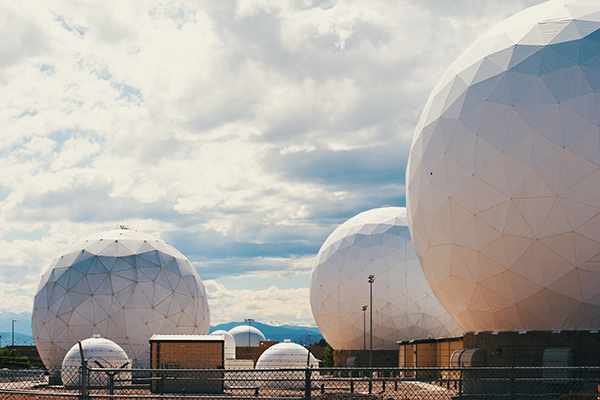By Richard Rubin, P.E., AICP, LEED AP, F.SAME, F.ASCE, and Joshua Imes

PHOTO BY JOSHUA IMES
San Diego County, Calif., has an active military population of over 143,000 men and women, with more than 200,000 veterans across the area as well, accounting for 13 percent of the population. A total of 1,000 veterans are enrolled at San Diego State University (SDSU). With such a large servicemember presence, the school recognized a critical need to provide them support. In July 2008, thanks to the gracious donation from the Barron Family, SDSU inaugurated the first Veterans Center in the California State University System, offering veteran students a dedicated space to connect with. This significant contribution led to the naming of the facility as the Joan & Art Barron Veterans Center. Then in 2010, the Department of Veterans Affairs chose SDSU as one of the first three universities to host a new program, the Vet Success on Campus, with an agency counselor on the team. Even with these successes, however, additional areas of focus for veterans would be welcomed, including for engineering and computer science majors.
To help meet this need, Troops to Engineers (T2E) was formed in 2011. This program provides support to students majoring in aerospace, mechanical, electrical, civil, and environmental engineering, as well as computer science. It helps provide specialized assistance for student veterans seeking to improve their professional development skills, obtain paid internships, and secure engineering-specific employment following graduation.
LOCALLY SUPPORTING T2E
T2E and SAME’s San Diego Post have formed a special relationship over the years, with SAME providing local support in many ways to the program—most notably through mentoring. Through this relationship, SDSU veteran students have been connected to private industry members practicing in the
areas of civil, structural, mechanical, and electrical engineering.
The San Diego Post recently kicked off an event where students and senior professionals pair up for a six-month mentoring program. Many SAME Fellows have committed to participate in this effort, lending tremendous experience to the group. The goal is to not only to mentor these individuals, but to get them involved in the local SAME student chapter to further develop their network and increase learning opportunities while they are in school and in their professional careers.
Building Skills
Most of the veteran students who begin their studies at SDSU have not heard of T2E. When they arrive, it is fairly common for them to visit the Barron Veteran Center for advice on how to effectively put their GI Bill to work. That is often when they discover T2E, along with other benefits there is to offer. Along with the administrative and advisory services available, the center has a lounge, “The Jack McGrory Bunker,” that gives these students a place to relax, share stories, and get to know peers engaged in the same curriculum.
T2E has a great deal of structure to it, with a variety of beneficial activities for student veterans to engage in. Professional networking events are organized that feature hiring managers from firms looking to bring on new engineers, as well as specific recruitment events where companies set up first interviews with prospective candidates. There also have been several workshops, often led by volunteers from industry, that cover resume building and interviewing skills, along with engineering facility tours that allow students to see how business is conducted in the workplace.
Perhaps the most significant enhancement to the program is the inclusion of its workshops as part of a school-sanctioned engineering class with credit. Titled “Military and Veteran – Emerging Engineer Identity,” the 101-level course has a curriculum that includes building relationships, goal setting, resume building, interview skills, examining workforce trends, understanding job searching, communication, and elevator speech development. Other activities include mock interviews; a requirement to connect with a professor or industry professional; and learning how to navigate the scholarship process. The classes are taught by a combination of SDSU staff and guest speakers from the engineering community.
Though the program directors focus many efforts on counseling advice and support, their primary mission is job placement. Meeting this objective requires them to develop strong relationships with industry professionals, especially hiring managers.
When these connections are cultivated, it provides a direct conduit to show employers the valuable experience of the veteran student and how they will translate that unique differentiation to make beneficial contributions in the workplace. Companies also provide the needed financial support to sustain the program, recognizing the access that it provides to quality job candidates (T2E is 100 percent philanthropically funded).
Program Success
In the program’s first three years, more than 70 individuals obtained employment in their chosen field—representing a 100 percent success factor. That pass-through rate has continued each year since, demonstrating the impact of the collaborative relationship between SDSU and industry representatives. Every individual participating in T2E has found employment in their chosen field.
Many of our military veterans have served their country and now seek to utilize their talents and education to begin a new chapter in a career as an engineer. Universities with a significant military presence in their population have an opportunity to make a contribution that will benefit these veterans and our industry for generations to come. It is an equation that helps in solving two national challenges: capacity concerns in the engineering profession; and ensuring America’s veterans can successfully move onto post-service careers.
T2E is a great model for other universities to adopt and give back to those who have served their country.
MAKING A SUCCESSFUL TRANSITION
T2E is full of success stories of students who have benefited from the program’s professional development and networking opportunities in the pursuit of an engineer career after their military service.
Geovanni Ramirez, who served as a radio operator in the U.S. Marine Corps, is majoring in Information Systems. When asked what aspects of T2E he benefited from, he cited enrollment in the Engineering 101 class, networking events, and one-on-one events with potential employers. Geovanni will graduate in 2023 and start a full-time position with Northrop Grumman in Utah.
Dylan Lake is a U.S. Army veteran majoring in Aerospace Engineering. Dylan indicated that the program provided him many benefits, including a camaraderie that helped him mentally transition from the service. Through T2E he was able to meet one-on-one with Northrop Grumman representatives in December 2022 and had a job offer in January 2023.
Josh Woodward (Marines) and Kevin Lock (Army) are two other veterans who participated in the program about seven years ago. They met potential employers through the workshops that T2E had organized for resume building and interview skills. It was through those introductions that they were offered internships, and later hired for full-time employment. They each continue to work for local civil engineering firms in San Diego.
Richard Rubin, P.E., AICP, LEED AP, F.SAME, F.ASCE, is Retired Civil Engineering Executive; rrubin1004@gmail.com.
Joshua Imes is Troops to Engineers Program Manager, College of Engineering, San Diego State University; jimes@sdsu.edu.
More News from TME
-

Digitally Upgrading the Base Civil Engineer Toolbox
At Mountain Home AFB, civil engineers are leading a digital transformation on asset data collection and management—helping speed acquisition workflows, improve space management, and deploy a digital twin prototype. -

Developing a Space Planning and Optimization Program
Facility space planning and optimization program for a federal agency encourages close integration between contractors and stakeholders to ensure a properly informed and defined outcome. -

Quantifying Risk Through Probabilistic Risk Assessments
Research conducted at the Air Force Institute of Technology tested the feasibility of using existing facility condition and work task data to quantify the risk of mission failure due to infrastructure limitations and subsequently use the assessment to inform future funding decisions.